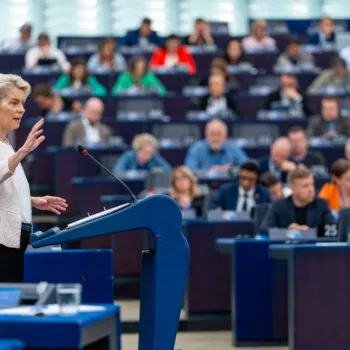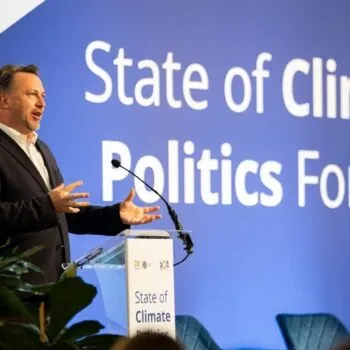There is a new dawn in the UK’s fight against climate change. After a two year wait, the Government has finally launched its Clean Growth Strategy. It is easy to pick holes in any Government strategy, but, in this instance we must not ignore the bigger picture. This bold new vision for de-carbonising the UK marks a major shift in the Conservative Government’s political approach to climate change.
Under David Cameron and George Osborne the clean energy transformation was put under relentless attack. Fracking for gas was sacrosanct and the framework for de-carbonisation, so carefully bolted together over the previous decade was ripped apart. Feed in tariffs were subject to huge cuts that decimated the solar market, on-shore wind was almost banned in England, the Green Investment Bank, the world’s first green public bank, was flogged off to Macquarie, the vampire kangaroo from Australia and the ‘green crap’ was eliminated from energy bills, leading to an 80% cut in the number of energy efficiency measures installed in homes.
This week we have witnessed a green energy political renaissance. The Government has presented a bold new vision which sets out a clear resolve to make the UK a world leader in low carbon technology development, recognising the huge economic potential of clean growth. Clean energy has been forged at the core of the Government’s emerging industrial strategy.
At the heart of this new strategy is energy efficiency. Make no mistake what a transformation this is. The Government has set out an impressive commitment to get all UK homes up to an energy performance rating of C (on the A to G scale). This is the target recently set out in the Building Energy Infrastructure Programme backed by E3G and a host of other organisations and businesses.
It means we now have an ambitious energy performance target which is in line with meeting our 5th carbon budget. To deliver it, the Government will have to triple the home insulation rate in the UK. Public investment in home energy improvements will have to double to unlock private investment and harness the £25bn housing repair and maintenance market.
This target is backed by the intention to regulate, a critical part of the solution to drive consumer action and lever in private investment. The intention is to use regulation to get all private rented homes and social housing up to C rating by 2030. Plus, regulation for more efficient boilers that will require an additional energy efficiency measure to be installed. These regulations have the power to make a huge dent in fuel poverty. The Energy Company Obligation, the main energy supplier-led scheme to deliver energy efficiency measures, will be continued to 2028, giving the supply chain longer-term clarity.
What is, however, conspicuous by its absence is the financing and the details on the incentives to drive take-up. This is not a trivial oversight. But a consultation has been launched to investigate these options, which include within its scope low interest loans, equity loans, direct subsidies and revenue-neutral ‘price signals’, or nudges. On the latter, Energy Minister Claire Perry stated in her interview on the Today programme that the Government would look at Stamp Duty rebates for energy efficient homes and green mortgages. The consultation also looks at the role distribution network operators and Clinical Commissioning Groups can play in driving take-up. There is a way to go but the fact that the Government is really investigating all these options is a breakthrough. If unleashed they can herald a retrofitting revolution.
This action on home energy efficiency has been complemented by ambitious action to support public sector building energy efficiency and a new scheme to support industrial energy efficiency. It’s an energy efficiency policy development bonanza.
But we know the Clean Growth Strategy is still not enough. The Government still fails to understand the huge and transformational potential of solar. On-shore wind hardly gets a look in, despite being the lowest cost technology for power. There is a jarring mismatch between the innovation funding going to nuclear versus renewables. Nuclear gets more than double that given to renewables despite the fact offshore wind costs have halved in the last few years. They are flogging a dead horse.
But that must not distract from the ambitious commitment the Government has made in this Strategy to unleashing a clean growth transformation. With so many new policy developments underway, the Government must now ensure they deliver. And that will only happen with the full support of the Treasury. That must include making the energy performance of our buildings an infrastructure investment priority.
We have taken one small step towards the clean-tech vision, but we need the money to make it a giant leap.



